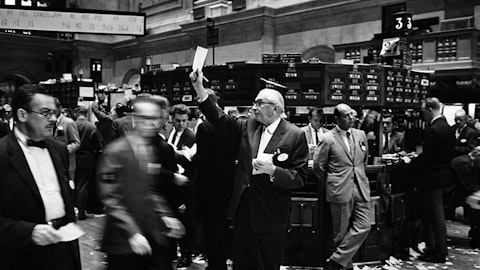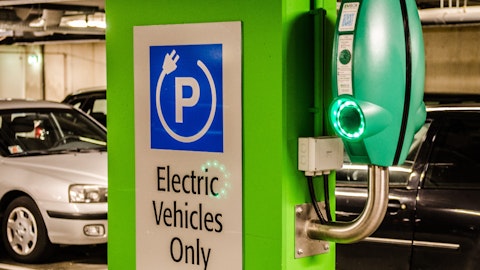Donovan Schafer: Okay. That’s helpful. And then with the production facility in Tennessee and kind of doing the new version of the step van and then also talking about maybe doing some more Xos hub trailers, is that something where you do — like you do it in batches and you kind of overhaul the line? I mean, I can imagine something like even going from the old version to the new version for the step van, having the structural changes, so that everything’s in between the chassis rails, that may involve moving some equipment around or training the laborers to say, okay, we did 20 vehicles this way, now we’re going to switch over and do 20 this other way, is that kind of how it’s done? Or do you run lines simultaneously? And then is there like switching costs or does that impact kind of economics and maybe leads to a few days of reduced production as you’re switching things over?
Just kind of conceptually trying to think through how you manage the different product lines?
Giordano Sordoni: Yes. This is Gio here. As far as the step van goes, the different options in the step van, the 100-mile and the 200-mile versions are really similar platforms. The 200-mile just has some extra batteries on board, so those can actually run on the same line. We do try to batch build as much we can. Then in a given week, we try to build all of the same spec vehicle, but having to switch throughout the week isn’t the biggest cost that’s something that we can handle. As far as the hub goes, that’s built separately. It’s quite a different design and that built separately, but also in Tennessee.
Donovan Schafer: Okay. And then if I could just get one last question and just because people — there’s the finance turmoil and all that stuff and people are trying to understand there’s the tightening of the credit market and how that would flow through to anything. So, I’m just curious with selling step vans, your primary products and your customer base and everything, what kind of financing is involved in these step van purchases? I mean, I imagine most of them aren’t just sitting on large checking account balances or something? And I assume there’s a certain amount of financing to purchase step vans? And then do those get turned into commercial vehicle asset-backed securitizations or something — I mean like who are kind of the main lenders help facilitate that? And any changes, have we seen a flow through in interest rates in that space?
Kingsley Afemikhe: Yes. And a really, really thoughtful question, Donovan. So, I’ll break it into two different ways. The first way is financing is offered to our customers. As we announced a couple of years ago, we work with amongst others DLL which is one of the largest asset backed financers, part of Rabobank, to offer financing to our customers. We also work with a range of other providers as well. We have seen a slight increase in the rates charged. But for most of our customers who are acquiring the fleets with financing, the structured financing, they’re acquiring an asset that’s a very critical part of their fleet, right? It’s a very critical part of their transportation of their assets. As evidenced, there’s a couple of percent of increases there in rates that are going to execute the purchase.
In many cases, we get a slight financing fee on that. We talked about it in our backlog went public. And the separate to that, what I was talking about is the potential to finance the assets in our balance sheet, which include kind of raw materials with some components of finished goods. We want to make sure that we get the right partner there, right? So, there are a number of different funds using non-banking institutions as well as some bank institutions that play in that space. And we have been in discussions there to find partners that work best for us. Ultimately, when you look at 2023, a couple of things that are really, really clear. First of all, so we expect inventory levels to fall. Definitely relative to revenue over the next couple of quarters, we’re seeing supply chain challenges ease and so that was a very significant use of capital for us in 2022 and that’s going to reduce a lot this year.




